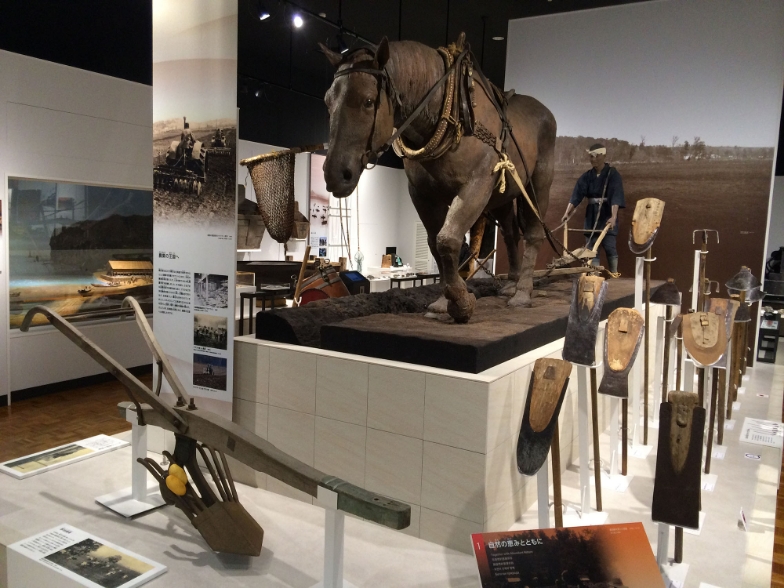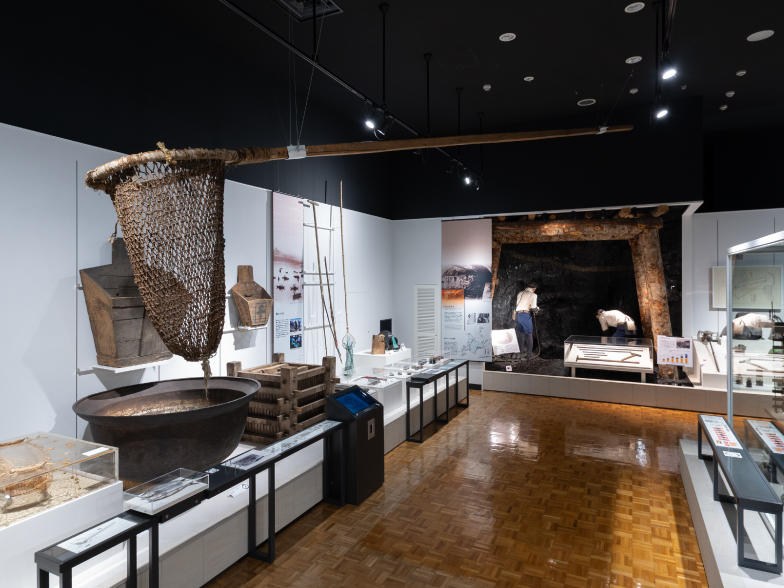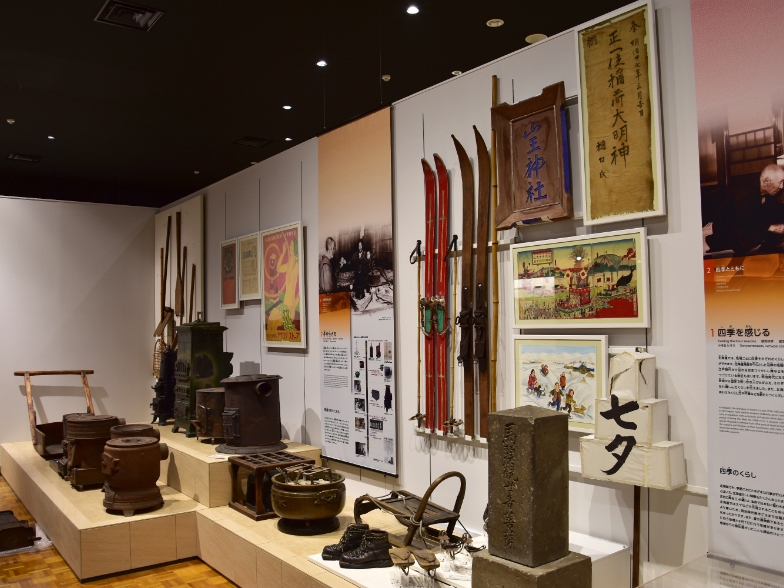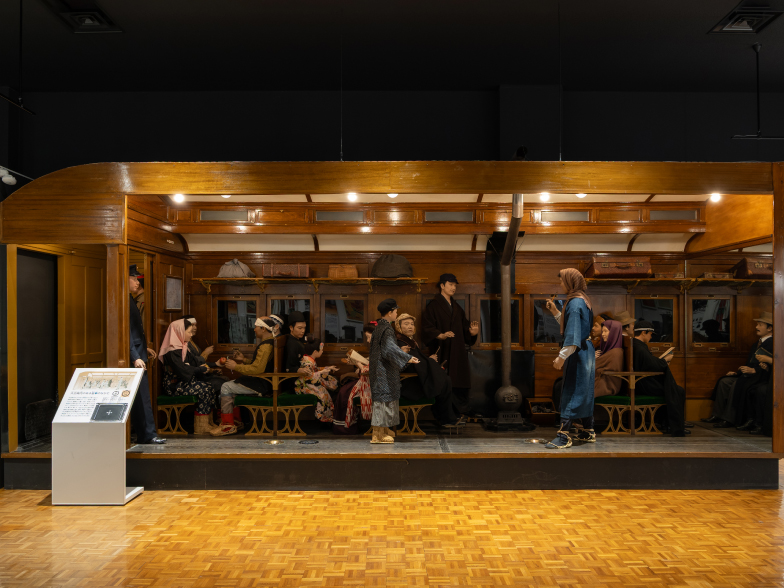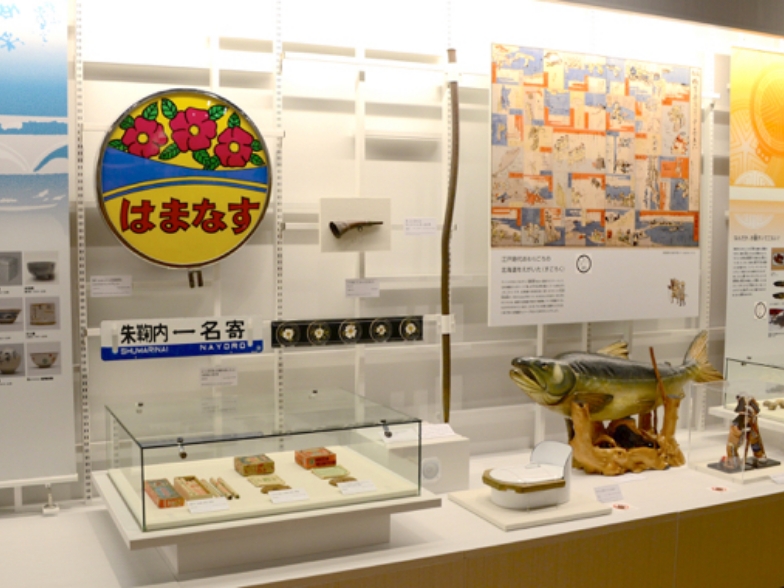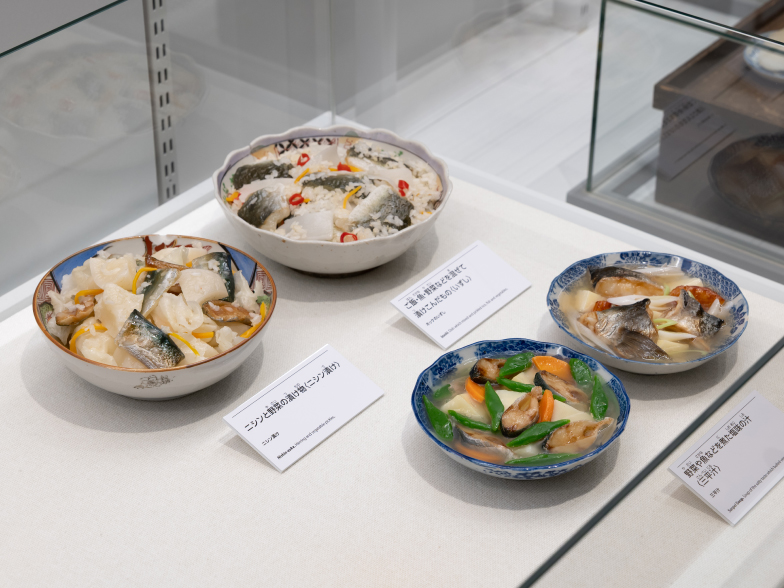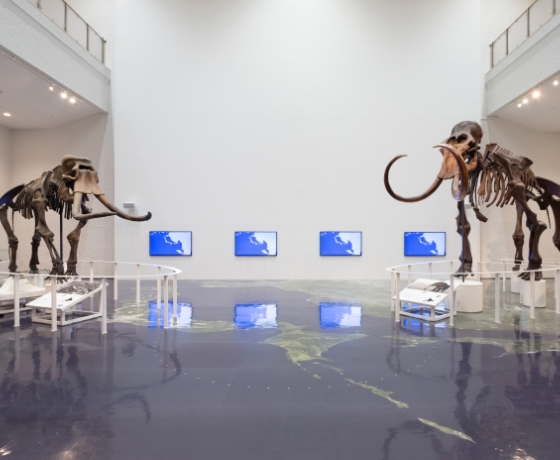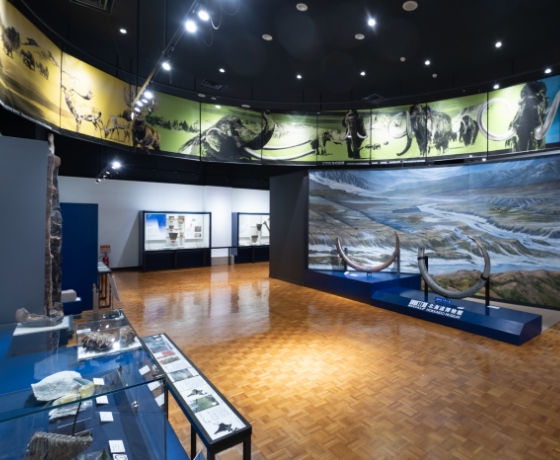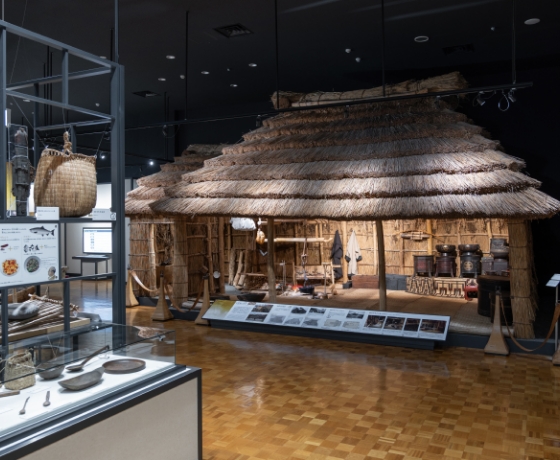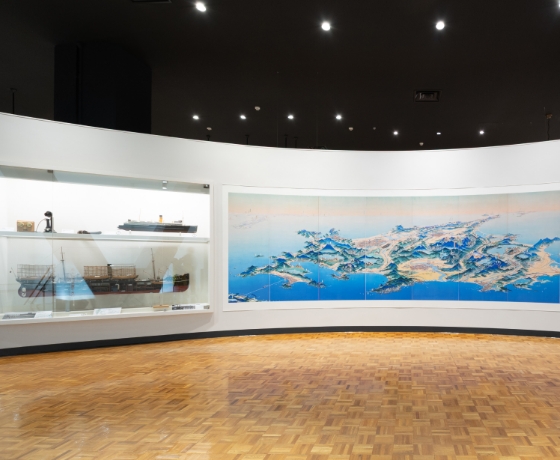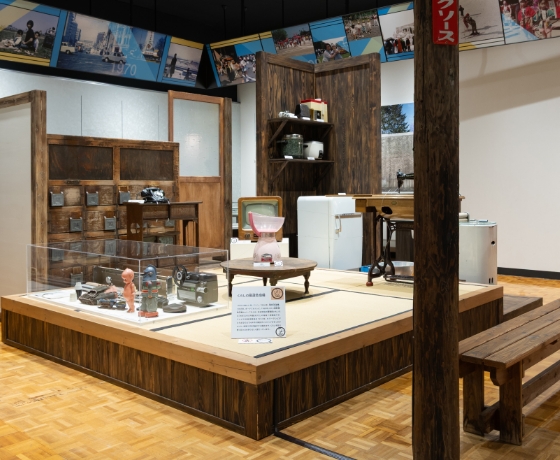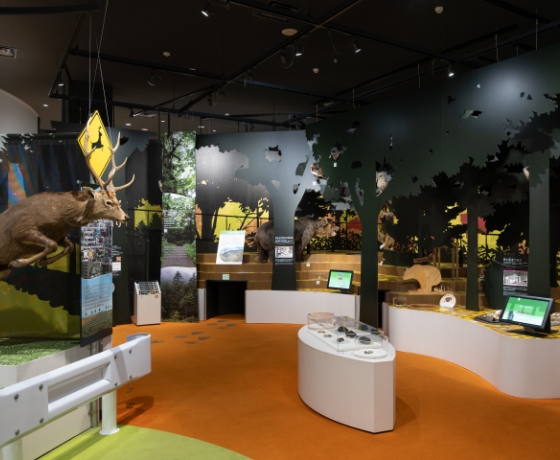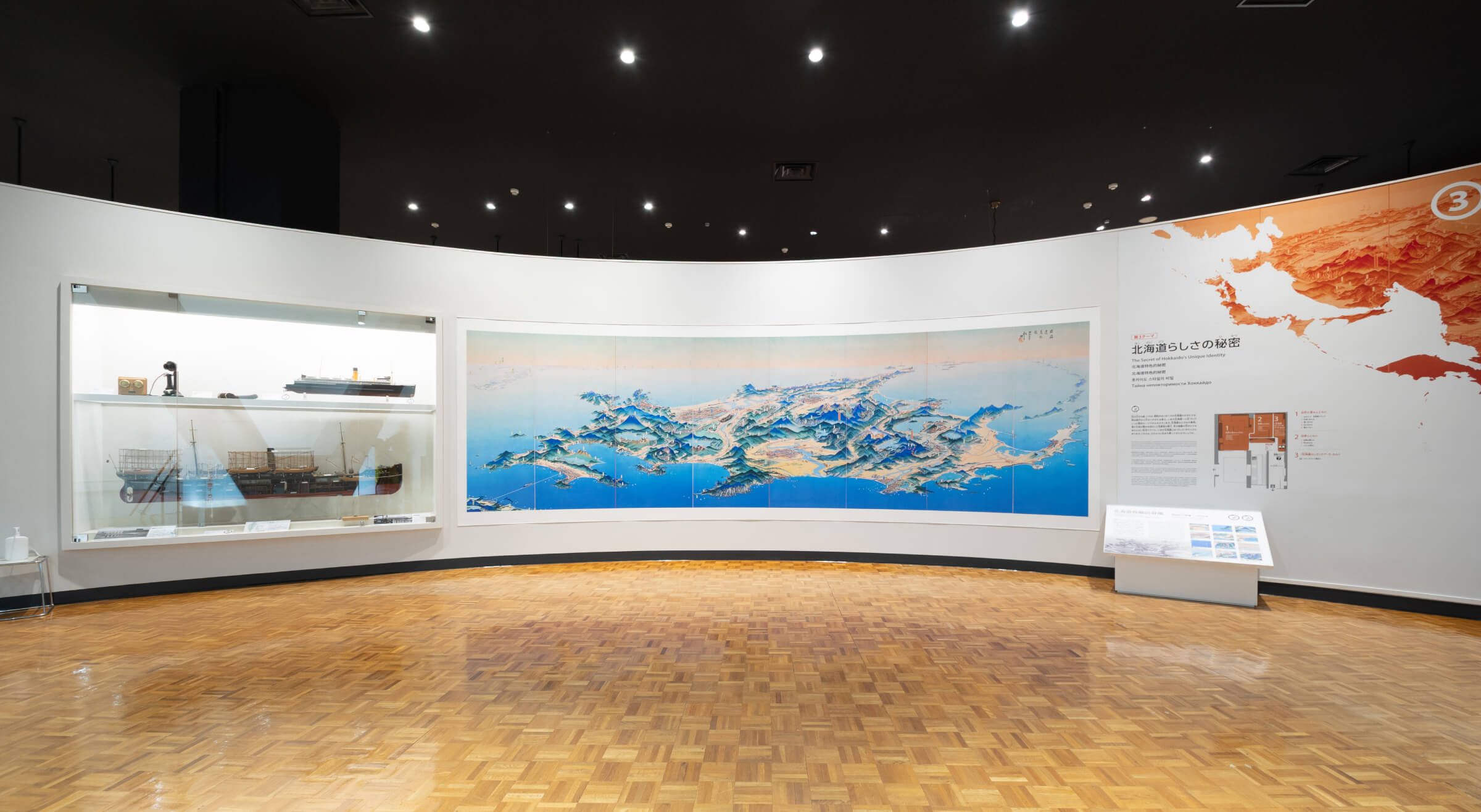
The large picture to the right depicts Hokkaido from the beginning of the Showa period (1926-89), capturing a moment in history when Hokkaido had undergone major changes from the Meiji period (1868-1912), and was beginning to approach its present state. Hokkaido is characterized by beautiful scenery, special local products made from bounties of the sea and earth, warm indoor winter lifestyles, and more. Modern Hokkaido is rich in such “uniqueness”. How has Hokkaido’s unique identity come to be?
Theme 3: The Secret of Hokkaido's Unique Identity
3-1: Together with Abundant Nature
3-2: Together with the Seasons
3-3: Hokkaido’s Unique Identity, A La Carte
Exhibits
Hokkaido Bird’s‐Eye View Folding Screen
Hokkaido Bird’s‐Eye View Folding Screen

Bird's-eye view is from the viewpoint of bird in the sky, a kind of painting drawn overlooking the geography and landscape from a high place. This painting was completed in 1936 by Hatsusaburo Yoshida, who made many bird's-eye view paintings from mid-Taisho period (1912-1926) to the 20's of the Showa era (1926-1989), and it remains as a folding screen. Vast oceans, mountains, rivers, lakes, developed land, city, railways, ships, steam, much of the continent itself and Sakhalin (Karafuto) and the Kuril Islands in distance. There are so many highlights in his work.
To the Agriculture Kingdom
To the Agriculture Kingdom
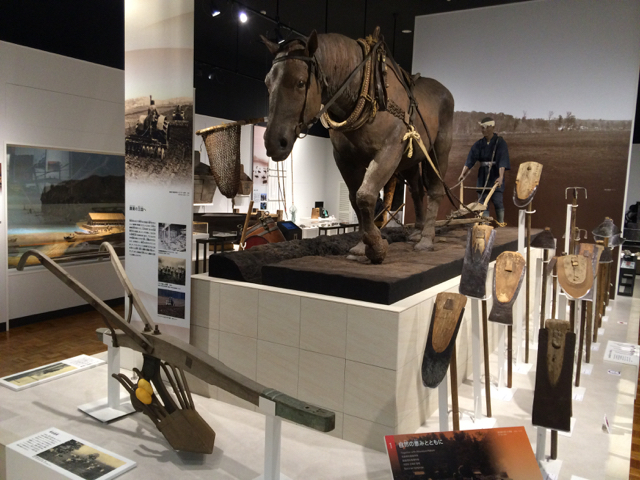
The Development Commission embraced and added western techniques in order to develop agriculture featuring dry field cropping in a vast and cold Hokkaido and established Sapporo Agricultural College in order to develop human resources. Since then, they have been improving breeding and other technological improvements, such as using western style tools like the plow which were pulled by horses, and picking by hand. All these basic improvements helped crops take advantage of the vast land that is Hokkaido and in turn, Hokkaido became the agriculture kingdom.
The Oldest Earthenware in Hokkaido
The Oldest Earthenware in Hokkaido
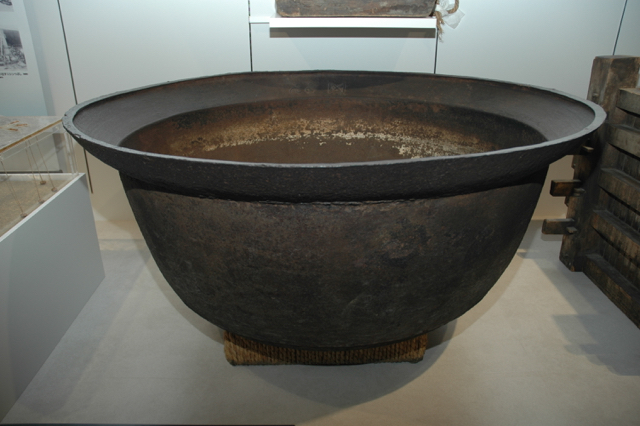
Most herrings were made into a fertilizer called Shimekasu, though sometimes called Nishinkasu. These big herring cookers were used for boiling large amounts of herrings. These cookers were made mostly in the Takaoka area within Toyama prefecture.
Rocks with Carved Images
Rocks with Carved Images
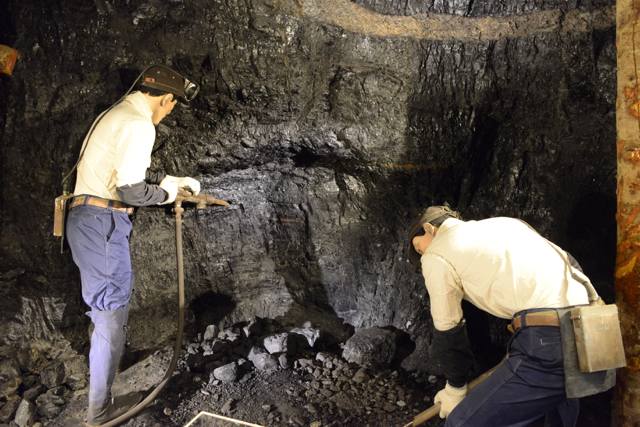
From the Meiji era (1868-1912) to early Taisho era (1912-1926), only manpower was used in coal mines. In the Kiriha (the working face), it's always a team work of Sakiyama (coal cutters) and Atoyama (pushers). They would use pick, mallet and chisel to dig coals. After World War 1, machines such as drills, coal picks and coal drills were used and found to be much more effective.
Crosscut Saw with Cutter Teeth, Rakers, and Gullets
Crosscut Saw with Cutter Teeth, Rakers, and Gullets
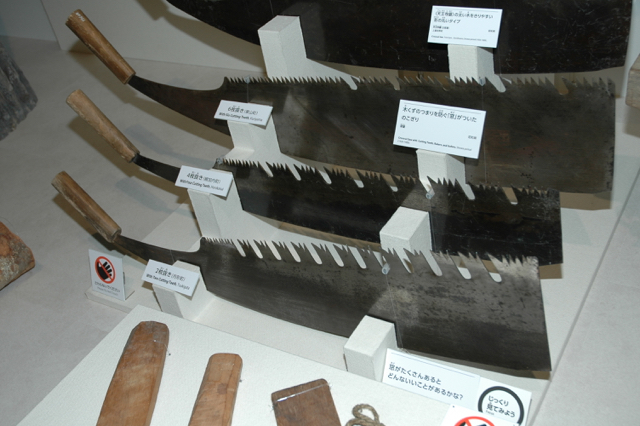
This saw has a raker, which gathers sawdust, and a window (the gullet) to avoid sawdust becoming stuck. These are called Madonoko (window-saw). They are easier and lighter to handle than normal saws and, to make it more effective, they were upgraded to 6 small teeth between each protruding tooth from 4 and 2.
Wooden Hyakunin Isshu
Wooden Hyakunin Isshu
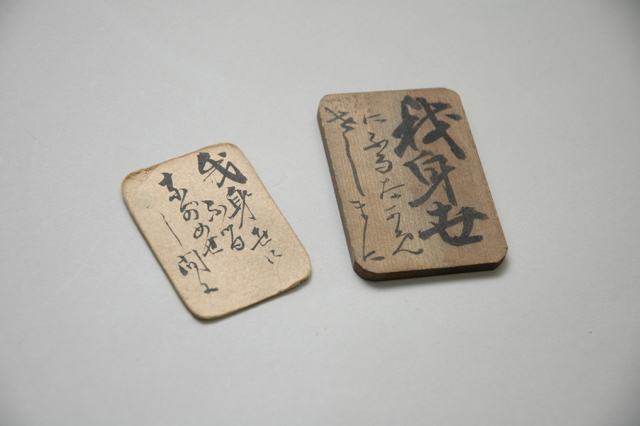
Hyakunin Isshu (the hundred poems by one hundred poets) refers to Ogura Hyakunin Isshu, which Teika Fujiwara created at the villa in Mount Ogura. In Hokkaido, the cards, called Ita-Karuta, were made of different types of wood, such as magnolia and the “Shimo-no-ku” (the second half of tankas) were written in cursive styles. These cards were played by many people, regardless of occupations, as a winter indoor activity from the mid Meiji era (1868-1912). To play one person reads the “Shimo-no-ku”, everyone else then rushes to find the same card and take it first. This game is also sometimes called Shimo-no-ku Karuta.
Various Snow-Clearing Tools
Various Snow-Clearing Tools
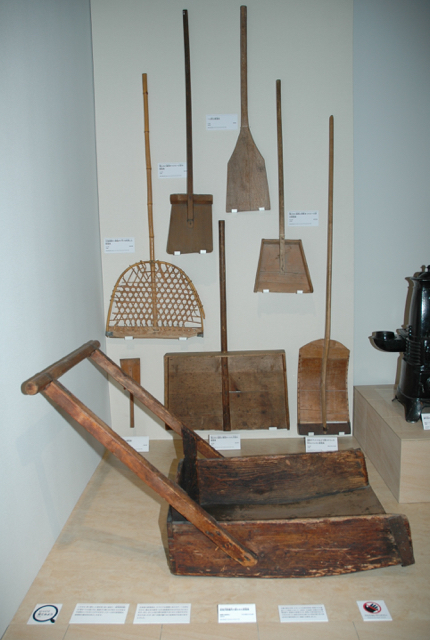
Spatula-shaped tool and metal made scoop were used for snow shoveling. The spatula-shaped tools were made of wood or bamboo and were called Kosuki, Kaesuki, Yukikaki or Jonba. There were other tools such as the “triangle sleigh”, which was pulled by a horse, and another tool that flattened the snow down. In 1950's, a snow-pushing tool called Yukioshi was invented and mainly used at train stations. This tool was commercialized and spread throughout Japanese families homes, and is now widely known as the “Mama-san Dump” or “Snow Dump”.
Let's Have a Look at a Third-Class Coach
Let's Have a Look at a Third-Class Coach
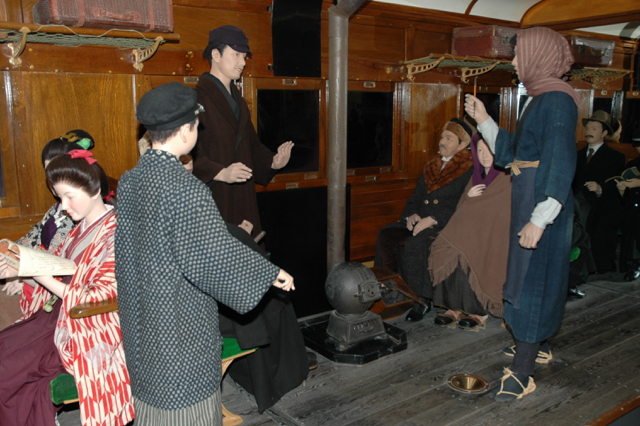
Coal heaters called ”Daruma Stove” and “Tako Stove” were often used inside coaches until electric heaters and steam heaters became common. These heated trains started running in 1892 and continued for almost 80 years. For supplying the fuel, a fire hook, a fire shovel and a coal box were used. The hole on the floor was for cleaning purposes but some passengers used it as a spittoon.
Bugle Blown to Ward off Bears
Bugle Blown to Ward off Bears
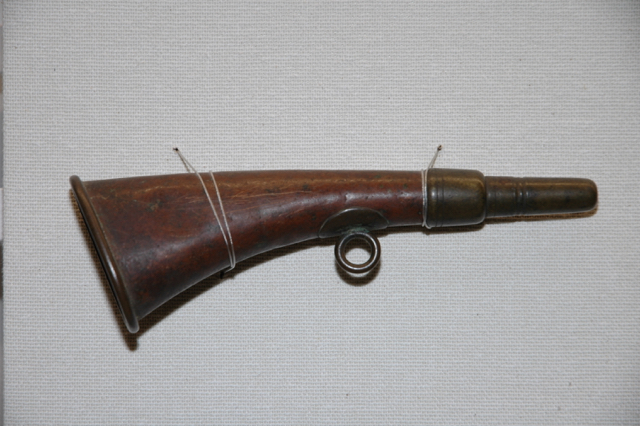
These bugles were often used by anyone who may have to walk through the bear habitat areas, in order to ward off and avoid bears. These people included post men, Hokkaido government officers and forest service officers (current District Forest Office). These bugles were needed from the Meiji era to the mid-Showa era.
The Plate Once Used for Sanpei-jiru (traditional fish soup)
The Plate Once Used for Sanpei-jiru (traditional fish soup)
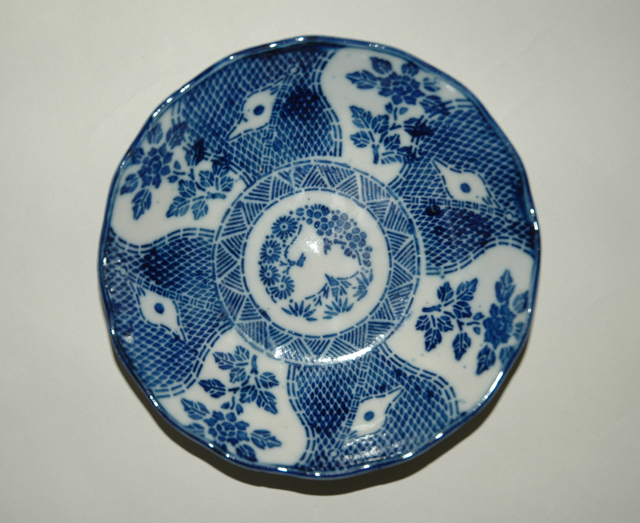
This is a small, deep dish that was produced mainly in the Mino region of Gifu Prefecture from the Meiji period until around the 20th year of the Showa period (1945). It was widely distributed to a variety of places, including Hokkaido. While they all look similar, a variety of patterns featuring rabbits, horses, cranes, cherry blossom trees, and the Rising Sun flag can be found. Interestingly, while somewhere along the way these dishes came to be known as “sampeizara” in Hokkaido, similar dishes are apparently known as “ikemori” in Mino.
